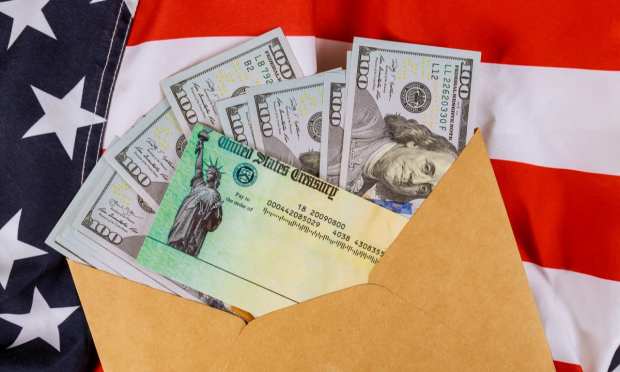Stimulus Round 2: Will Consumers Save Or Spend?

After months of dispute, debate and eventually compromise, the second round of stimulus is in the process of going out to Americans. Already Venmo announced its launch of a new product to help get those funds rolling out faster, with the new Cash a Check feature in its app.
Cash a Check allows select Venmo customers ways to cash their physical checks — including payroll and government disbursements. All fees associated with the Venmo Cash a Check feature for stimulus funds will be waived for a limited time — making it both fast and affordable for Venmo users to access their stimulus funds. The new cash app, once a consumer has uploaded an image of their check with their phone, reviews the checks for a few seconds (at most up to an hour), and once approved the funds will be digitally transferred to their Venmo accounts.
And, with all the delays and debates over the last several months, speed has become a primary concern for the second round of stimulus distribution as questions swirl about when it will arrive, who it will go to and what consumers will do with it.
The COVID-19 Relief Basics
The second stimulus check will be valued at $600 per person, granted they make less than $70,000 a year. The official start date for the program is Monday (Jan. 4) though some check were sent out in advance of that, starting on Dec. 31, meaning a fair share of Americans have already received their stimulus funds via direct deposit.
For Americans for whom the government does not have verifiable direct deposit information, the federal government will be sending out stimulus checks and prepaid card with funds loaded on them. The government’s self-imposed deadline for this distribution is Jan. 15, giving it roughly 17 days total to push out 100 million payments. For those consumers the government can’t pay by that deadline, things get a bit more complicated and the wait becomes longer, according to CNET.
Consumers who have not been paid by that date will need to claim all or part of the missing amount via the IRS Recovery Rebate Credit, which they can claim when they filed their taxes for 2020. Consumers may also claim any money the IRS still owes from the first round of checks. Those issues are expected to be less problematic for direct deposit consumers. However, given that 22 percent of all first-round disbursements when out in check form, according to Newsweek, that’s an awful lot of people waiting an indeterminate amount of time for payment.
As was the case with the first round of stimulus, consumers can track their payment via the IRS Get My Payment tracking tool, though they will not be able to change their bank account information, meaning anyone who changed bank accounts between the first and second stimulus will likely be getting a check this time around.
Where Will The Money Go — Savings Or Spending?
Though the pace of the flow of funds remains a bit of a question mark, the funds are clearly flowing and will continue to do so for the next 11 days (and possibly 11 months). What consumers will do with that money when it arrives, however, remains an open question.
While consumers did spend some of their first-round payments, it is notable that consumers were in many cases more likely to use the funds to either pay down debt or fatten their savings accounts.
The differentiator is consumer liquidity. Said simply, the more money consumers already have in the bank, the less likely they are to spend it, while those with the least liquidity (lowest savings rates) tend to be more likely to spend. An August National Bureau of Economic Research working paper — “How Did U.S. Consumers Use Their Stimulus Payments?” — indicated that low-income households and long-term unemployed households were the least likely to push money into savings accounts.
“Other groups that were more likely to report spending most of their checks were those living in larger households, men, Hispanics and those with lower education,” the authors wrote. Black Americans, older people, and people with mortgages were more likely to use their checks to pay debt.
But government data, it seems, would support a slightly different conclusion. A Bureau of Labor Statistics analysis based on the Household Pulse Survey, a joint project of the Census Bureau, BLS and other federal agencies found that the tendency was clearly toward spending, with a strong majority, 59 percent, claiming they would spend their stimulus dollars to fulfill household needs.
Meaning when it comes to the second round of stimulus there are two sets of data to predict what consumers will do with the money. Will they spend or save? Will the patterns from the first stimulus round hold? Those remain the questions that will be answered as round two rolls out.
